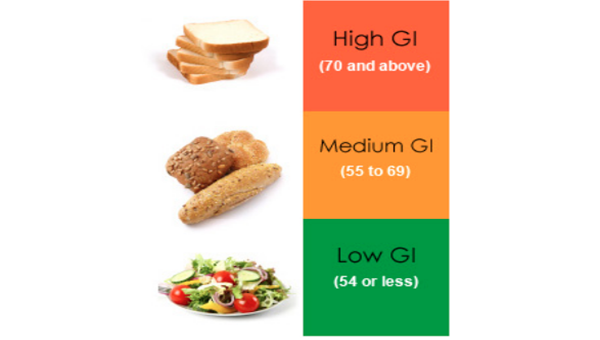
The glycemic index is a measure of how fast blood sugar levels rise after eating a certain food. The scale is limited because it does not take into account the serving size of the food being eaten.
Low glycemic foods are broken down over a longer period of time. They don’t cause a spike in insulin levels. These foods provide longer lasting energy. They are also associated with low risk of diabetes and heart disease. Basically, in the big picture they are the healthy option. Some foods in this category are beans, small seeds, most whole intact grains, most vegetables, and most sweet fruits.
Medium glycemic foods take a shorter time to break down and make insulin levels rise higher immediately after consuming this type of food. Foods in this category include enriched wheat or not intact whole wheat, pita bread, basmati rice, unpeeled boiled potato, grape juice, raisins, prunes, pumpernickel bread, cranberry juice, and bananas.
High glycemic foods cause an immediate spike in insulin levels and are broken down quickly. They don’t provide long lasting energy. These foods are a good choice immediately after a long training session when your body has used up blood sugars for energy. The consistent consumption of these foods are associated with heart disease and diabetes. The foods in this category are white bread, most white rice, corn flakes, potato, pretzels, parsnip, and bagels.
 About Adam Pegg
About Adam Pegg



